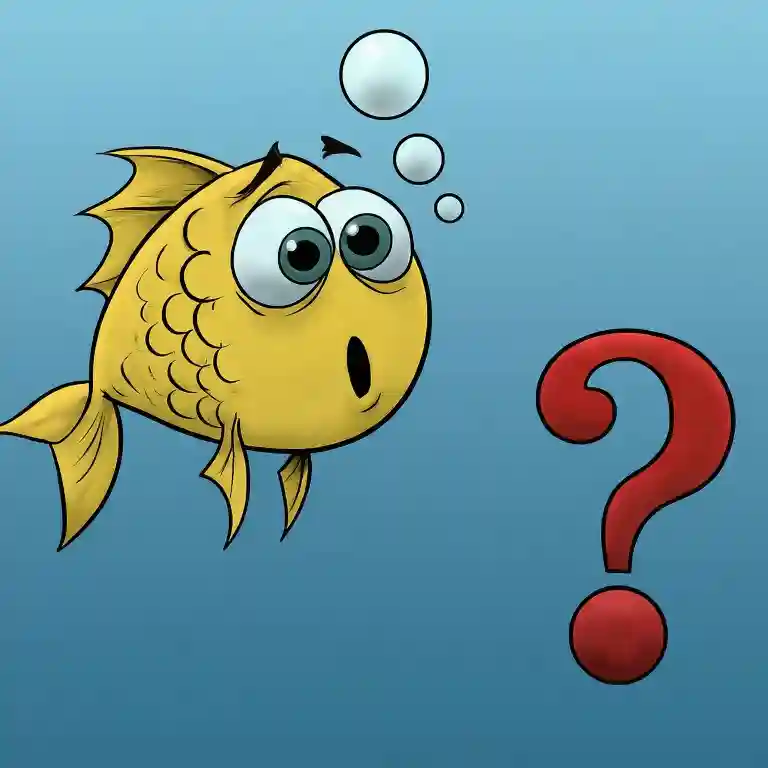Yes, fish are animals that live in water. They have gills, fins & scales.
Fish are part of a group that also includes humans, birds, reptiles & amphibians. Scientists have identified over 34,000 species of fish.
Characteristics Of Fish
Fish have special qualities that make them different from other animals like they are aquatic, cold-blooded, etc.
- Vertebrates: Fish have backbones and are the largest group of animals with backbones. They have been around for about 530 million years.
- Cold-blooded: Fish can adapt to living in many environments from icy waters to hot seas, by adjusting their body temperature to match the water around them.
- Aquatic: Fish need water to survive & can be found in rivers, lakes, oceans, seas & mangroves. Freshwater habitats like rivers & lakes are home to almost half of all fish species despite covering a small part of the Earth.
- Fins & scales: Fish have fins for movement & scales for protection. They use different fins for balance & swimming & have various types of scales for defense.
Classification Of Fish

Fish are classified into three major groups which are jawless fish, cartilaginous fish & bony fish.
- Jawless fish: These fish are very old and do not have jaws or paired fins. They have existed for over half a billion years. Hagfish & lampreys are examples of these fish.
- Cartilaginous fish: These fish have skeletons made of cartilage instead of bone, with jaws and paired fins. Examples are sharks, skates & rays.
- Bony fish: These fish come in many different types, with more than 32,000 known species. They have bone skeletons, jaws & fins that come in pairs. Some examples are tuna, salmon & goldfish.
Reproduction & Lifecycle Of Fish
The lifecycle of fish can be divided into three stages such as spawning, fertilization & development stages.
A. Spawning
This is where adult fish reproduce.
- The female releases eggs into the water in large numbers.
- The male releases sperm (milt) into the water to fertilize the eggs.
- In fish, making babies involves doing certain things. For example, some fish make nests or go to special places to have babies.
B. Fertilization
This is when a sperm and egg come together to make a new living thing.
- Fertilization can happen inside or outside the female fish’s body.
- External fertilization happens outside of the body & is more common, but there is a greater chance that the eggs may not get fertilized.
C. Development Stages
The fertilized egg develops through different stages like egg, larva, fry & juvenile.
- Egg: The baby fish grows inside a soft or sticky eggshell. It gets its food from a yolk sac.
- Larva: After a fish is born, it’s called a larva. Its body shape is different from an adult fish & it still needs the yolk sac or reserves inside itself for food.
- Fry: When the yolk sac runs out, the baby fish becomes a fry. It starts eating tiny creatures like plankton & starts to look more like a grown-up fish.
- Juvenile: The fish continues to grow & develop & eventually becomes an adult.
Behavior & Habitats Of Fish

Fish have special behaviors & adaptations that help them survive in the water. Let’s explore three important aspects.
A. Social Behavior
Fish can either be on their own or very friendly with other fish.
- Increased feeding efficiency: Groups of fish work together to catch food & avoid getting eaten. Their teamwork helps them stay safe & find food more easily.
- Enhanced defense against predators: Groups of fish are better at protecting themselves from predators.
- Improved reproduction: In some fishes, being with others helps them have babies more easily.
B. Predation & Feeding Habits
Fish have developed different ways to find & eat food to stay alive. Here are some examples.
- Predators: These fish chase & eat other fish. They have sharp teeth, good eyesight, & can swim fast to catch their food. Some examples are sharks, barracuda & largemouth bass.
- Scavengers: These fish eat dead or rotting stuff. They can smell well to find food & may have special ways to eat dead animals. Some examples are catfish & eels.
- Filter feeders: These fish eat small creatures & plankton by filtering water with special gills. Some examples are menhaden & whale sharks.
C. Adaptations To Their Environment
Fish have special abilities that help them live in different water environments. This includes freshwater streams & the deep ocean. Here are some examples.
- Body shape: Slim bodies help fish swim well. Flat bodies are good for fish that live at the bottom of the water, while long bodies are better for fish that hunt fast.
- Fins: Fins help fish move, stay balanced & change direction. Fish have different fin shapes & sizes to help them swim in different ways & environments.
- Coloration: Fish change color to hide or protect themselves or talk to each other. Some fish in coral reefs are colorful to tell predators they are poisonous, while others can change color to match their environment & hide.
- Special senses: Fish have different ways to see, hear, smell, taste & feel movement in the water. These senses help them find food & other fish.
Also Read:
Slowest Fish In The World & Their Speed In MPH
Best Catfish Bait In The World: Best Time To Use Them
How Long Does Tuna Fish Last In The Fridge?
Source: Nationalgeographic
Conclusion
In short, fish are cool animals that come in lots of different types. They are important for the environment & for people to eat.
We need to take care of fish by fishing responsibly, protecting where they live & keeping the water clean. This will help keep fish around for our kids & keep the oceans & lakes healthy.

I love animals & want to know more about different creatures & sharing their stories with everyone. From my childhood, I’ve been exploring forests & watching animals in their homes.
Now, I write about my adventures & all the amazing things I learned. My blogs are easy to understand & make you want to know more about animals. I teach about why animals are important & why we should take care of them.


1 thought on “Are Fish Animals?”